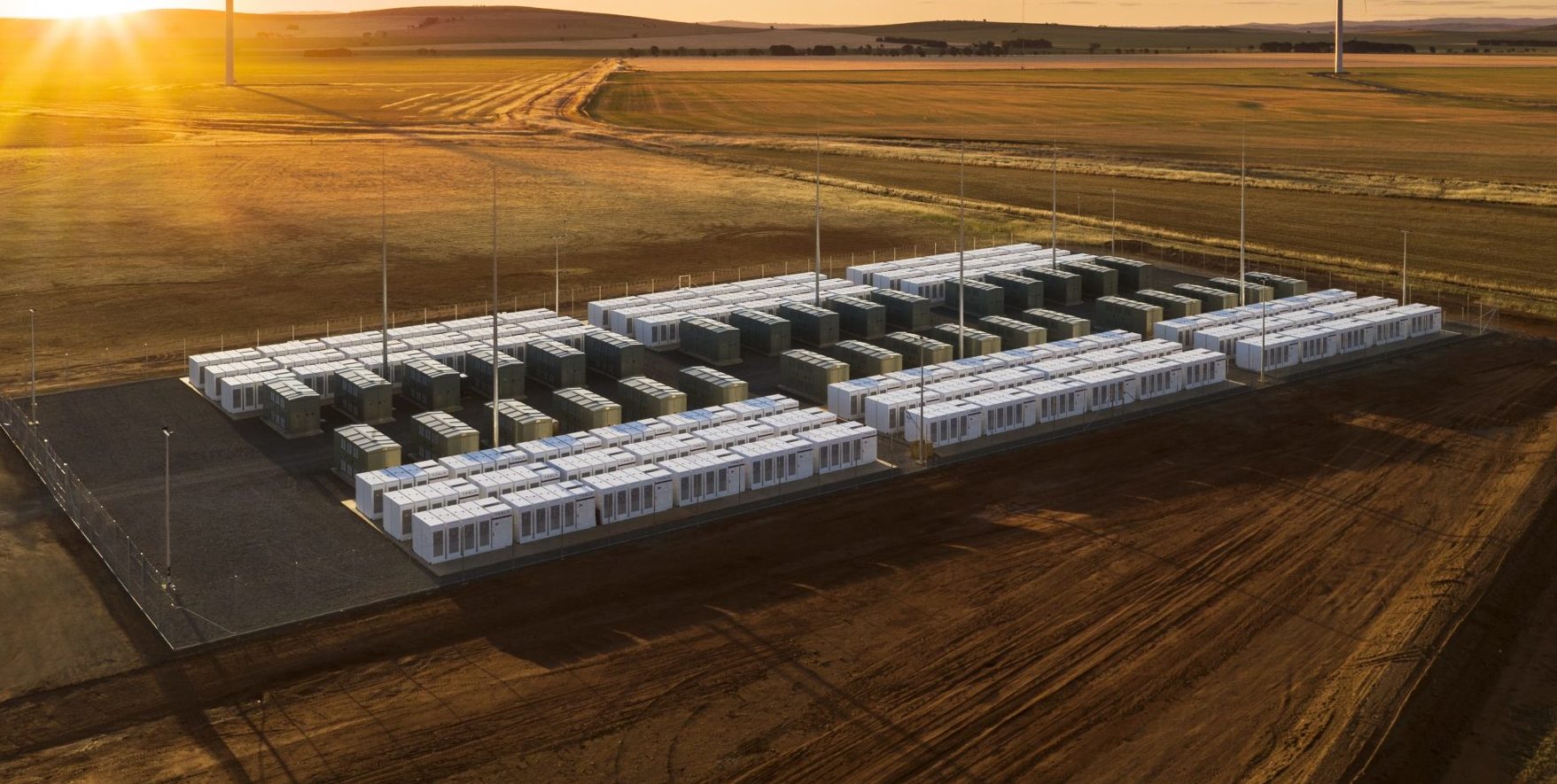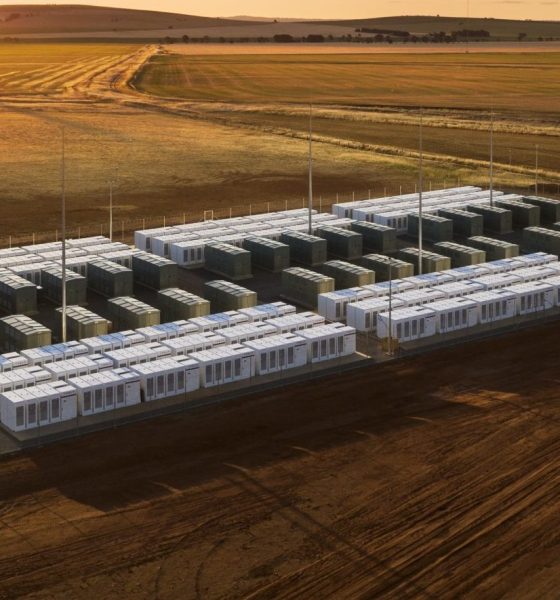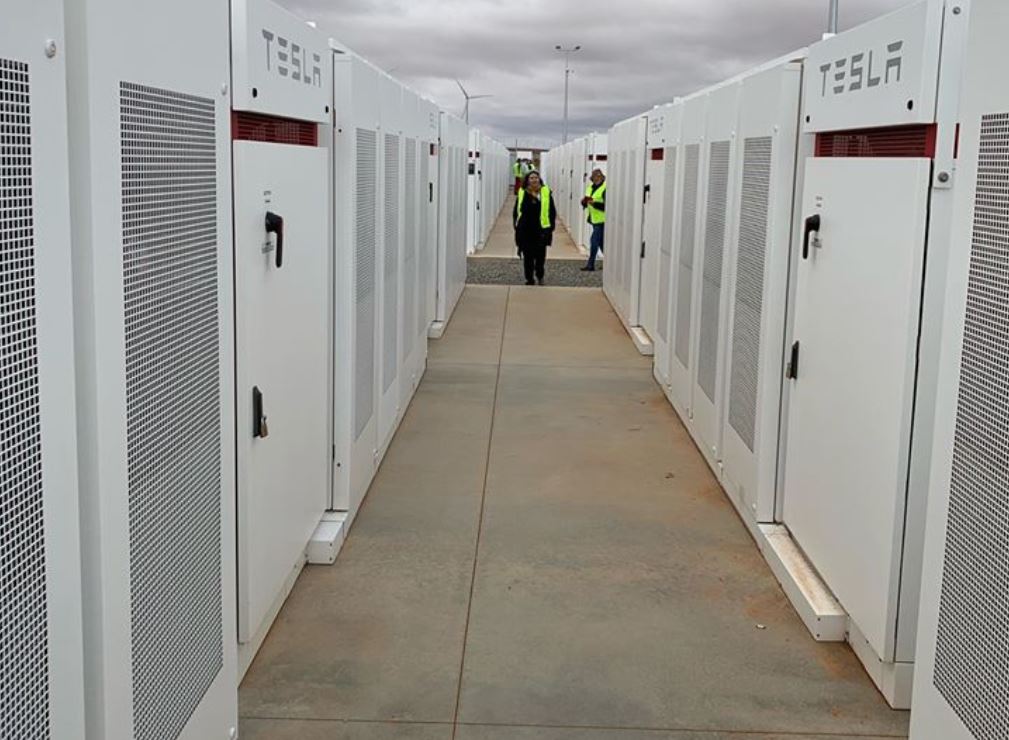

Energy
Tesla “big battery” in Australia is becoming a bigger nightmare for fossil fuel power generators
Tesla’s “big battery” utility-scale Powerpack system at the Hornsdale Power Reserve in South Australia has yielded more than doubled the savings to consumers in 2019 than the year prior as it dominates fossil fuel generators on quicker demand response for the grid.
Hornsdale Power Reserve saved consumers AUD116 million ($75.78 million) in 2019, a big jump from AUD40 million ($26.14 million) savings in 2018.
The Hornsdale Power Reserve, owned and operated by French renewable energy producer Neoen, is home to the largest lithium-ion battery energy storage system in the world with a 100 MW/129 MWh. Tesla Powerpack has been playing a significant role in grid stability since its installation in 2017, a function previously dominated by fossil fuel generators that bring energy prices high during system faults of planned maintenance.
“Hornsdale has just been the best asset for the state, and for us as well, it’s a real success story,” head of development at Neoen Australia Garth Heron said in an interview with RenewEconomy. We have shown that these kinds of systems can work. It saves consumers a lot of money, and it’s something we should be rolling out right across the market.”

The system that covers approximately one hectare of land at the Hornsdale Wind Farm provides grid stability to consumers, storing excess energy during off-peak periods and supplying the grid when renewable outputs are low. When a power plant goes down or when there is greater demand for energy, it is practically a race to meet that demand. Tesla battery-powered HPR beats power providers dependent on fossil fuel and gives consumers a win-win scenario. Consumers benefit from the lower prices of HPR and blackouts that can disrupt businesses or daily household activities are avoided. As South Australia shifts to renewable energy, fossil fuel power generators that did not have potent competition before in the market are now forced to bring their prices down back from the orbit.
A report by Australian consulting firm Aurecon analyzed the impact of the Tesla big battery at Hornsdale Power Reserve in its role in the Frequency Control and Ancillary Services (FCAS) markets. These are basically events that require quick reactions when there are sudden changes in demand or supply.
For example, when the Australian Energy Market Operator called for 35MW of FCAS in January, the Tesla big battery was quick to respond and kept prices reasonable. The prices were as low as AUD270 ($176)/MW instead of hitting AUD11,500($7,511)/MW to AUD14,000($9,143)/MW if supplied by the fossil fuel-dependent generators. When South Australia was “islanded” because of a major outage in Victoria, the HPR was able to save consumers AUD14 million in five hours.
According to Aurecon, the biggest savings came from the raised FCAS and amounted to more than AUD50 million ($32.65 million).
The Hornsdale Power Reserve also has a significant impact on FCAS market regulation. Tesla battery use has pushed the average prices from AUD450 ($294)/MWh two years before the installation of HPR to just over AUD20 ($13)/MWH. With lower prices, battery-generated power practically brought fossil fuel power plants, that ruled the region like cartels, to their knees.
Tesla battery has demonstrated how lithium-ion battery power reserves can play a big role in the security of the overall grid. While fuel fossil-powered generators will take several minutes to feed power to the grid in need, the HPR’s fast-discharge capability beat these options and give consumers access to more affordable energy. This also bodes well for owner and operator Neoen to make most of the potential returns, and of course, for Tesla’s energy business.
Tesla’s big battery has proven that battery storage is a practical option on a grid-scale. And it’s very profitable. The state government only injected AUD4 million ($2.61 million) into the multi-million project.
During the final quarter of 2019, the revenue of the Hornsdale Power Reserve jumped by 56%.
The HPR also announced plans to expand its capacity by 50%, boosting it by 50MW/64.5MWh. The project is expected to be completed in the first half of 2020 and will provide stabilizing inertia services critical to the shift to renewable energy in the region, and help push Australia closer to its goal of being net 100% renewable by 2030.
With the numbers clearly showing the benefits of Tesla’s big battery, it is not just a big banana as Australian prime minister Scott Morrison once said.

Energy
Tesla starts hiring efforts for Texas Megafactory
Tesla’s Brookshire site is expected to produce 10,000 Megapacks annually, equal to 40 gigawatt hours of energy storage.

Tesla has officially begun hiring for its new $200 million Megafactory in Brookshire, Texas, a manufacturing hub expected to employ 1,500 people by 2028. The facility, which will build Tesla’s grid-scale Megapack batteries, is part of the company’s growing energy storage footprint.
Tesla’s hiring efforts for the Texas Megafactory are hinted at by the job openings currently active on the company’s Careers website.
Tesla’s Texas Megafactory
Tesla’s Brookshire site is expected to produce 10,000 Megapacks annually, equal to 40 gigawatt hours of energy storage, similar to the Lathrop Megafactory in California. Tesla’s Careers website currently lists over 30 job openings for the site, from engineers, welders, and project managers. Each of the openings is listed for Brookshire, Texas.
The company has leased two buildings in Empire West Business Park, with over $194 million in combined property and equipment investment. Tesla’s agreement with Waller County includes a 60% property tax abatement, contingent on meeting employment benchmarks: 375 jobs by 2026, 750 by 2027, and 1,500 by 2028, as noted in a report from the Houston Business Journal. Tesla is required to employ at least 1,500 workers in the facility through the rest of the 10-year abatement period.
Tesla’s clean energy boom
City officials have stated that Tesla’s arrival marks a turning point for the Texas city, as it highlights a shift from logistics to advanced clean energy manufacturing. Ramiro Bautista from Brookshire’s economic development office, highlighted this in a comment to the Journal.
“(Tesla) has great-paying jobs. Not just that, but the advanced manufacturing (and) clean energy is coming to the area,” he said. “So it’s not just your normal logistics manufacturing. This is advanced manufacturing coming to this area, and this brings a different type of job and investment into the local economy.”
Energy
Tesla and Samsung SDI in talks over new US battery storage deal: report
The update was related by industry sources and initially reported by South Korean news outlets.

Recent reports have suggested that Tesla and Samsung SDI are in talks over a potential partnership to supply batteries for large-scale energy storage systems (ESS).
The update was related by industry sources and initially reported by South Korean news outlets.
ESS batteries to be built at Samsung’s Indiana plant
As noted in a report from Korea JoongAng Daily, the demand for energy storage systems has been growing rapidly in North America, thanks in no small part to the surge in AI investments across numerous companies. With this in mind, Tesla has reportedly approached Samsung SDI about a potential battery supply deal.
The deal is reportedly worth over 3 trillion Korean won (approximately $2.11 billion) and will span three years, according to The Korea Global Economic Daily. A battery supply deal with Samsung SDI could make sense for Tesla as the company already has a grid-scale battery, the Megapack, which is perfect for industrial use. Samsung SDI could simply supply cells for the EV maker.
Production of the batteries would reportedly take place at Samsung SDI’s joint venture factory with Stellantis in Indiana, which is currently under construction. Samsung SDI recently announced plans to use part of that plant’s EV lines to produce cells for ESS, with a targeted capacity of 30 GWh by the end of next year.
Tesla and Samsung’s partnership
At present, only a handful of manufacturers, including Korea’s LG Energy Solution, Samsung SDI, SK On, and Japan’s Panasonic, are capable of producing energy storage-scale batteries domestically in the United States. A Samsung SDI official issued a comment about the matter, stating, “Nothing has been finalized regarding cooperation with Tesla.”
The possible energy storage system deal adds another layer to Tesla’s growing collaboration with Samsung, which is already in line as a partner in the upcoming production of Tesla’s AI5 and AI6 chips. Early sample manufacturing of the AI6 is expected to begin in South Korea, with mass production slated for Samsung’s Texas-based Taylor foundry when it starts operations.
The AI6 chip will power Tesla’s next wave of high-volume projects, including the Optimus humanoid robot and the autonomous Cybercab service. Musk has called the partnership with Samsung a “real collaboration,” adding that he personally plans to “walk the line” at the Taylor facility to speed up progress.
Energy
Tesla VP hints at Solar Roof comeback with Giga New York push
The comments hint at possible renewed life for the Solar Roof program, which has seen years of slow growth since its 2016 unveiling.

Tesla’s long-awaited and way underrated Solar Roof may finally be getting its moment. During the company’s Q3 2025 earnings call, Vice President of Energy Engineering Michael Snyder revealed that production of a new residential solar panel has started at Tesla’s Buffalo, New York facility, with shipments to customers beginning in the first quarter of 2026.
The comments hint at possible renewed life for the Solar Roof program, which has seen years of slow growth since its 2016 unveiling.
Tesla Energy’s strong demand
Responding to an investor question about Tesla’s energy backlog, Snyder said demand for Megapack and Powerwall continues to be “really strong” into next year. He also noted positive customer feedback for the company’s new Megablock product, which is expected to start shipping from Houston in 2026.
“We’re seeing remarkable growth in the demand for AI and data center applications as hyperscalers and utilities have seen the versatility of the Megapack product. It increases reliability and relieves grid constraints,” he said.
Snyder also highlighted a “surge in residential solar demand in the US,” attributing the spike to recent policy changes that incentivize home installations. Tesla expects this trend to continue into 2026, helped by the rollout of a new solar lease product that makes adoption more affordable for homeowners.
Possible Solar Roof revival?
Perhaps the most intriguing part of Snyder’s remarks, however, was Tesla’s move to begin production of its “residential solar panel” in Buffalo, New York. He described the new panels as having “industry-leading aesthetics” and shape performance, language Tesla has used to market its Solar Roof tiles in the past.
“We also began production of our Tesla residential solar panel in our Buffalo factory, and we will be shipping that to customers starting Q1. The panel has industry-leading aesthetics and shape performance and demonstrates our continued commitment to US manufacturing,” Snyder said during the Q3 2025 earnings call.
Snyder did not explicitly name the product, though his reference to aesthetics has fueled speculation that Tesla may finally be preparing a large-scale and serious rollout of its Solar Roof line.
Originally unveiled in 2016, the Solar Roof was intended to transform rooftops into clean energy generators without compromising on design. However, despite early enthusiasm, production and installation volumes have remained limited for years. In 2023, a report from Wood Mackenzie claimed that there were only 3,000 operational Solar Roof installations across the United States at the time, far below forecasts. In response, the official Tesla Energy account on X stated that the report was “incorrect by a large margin.”








